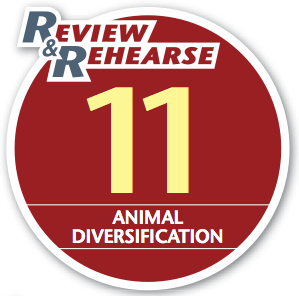
Chapter 11. Chapter 11: Animal Diversification
Review & Rehearse

Instructions
Review the visual summaries and answer the essay questions below.
Make sure to enter a brief response that completely answers each question and explains your reasoning. When you click "Submit," you will be provided instant feedback, allowing you to check if your response is correct.
(This activity contains 24 total essay questions. Each new question will be revealed once you complete the preceding question.)
1.


1. Describe the three characteristics that define animals.
2.
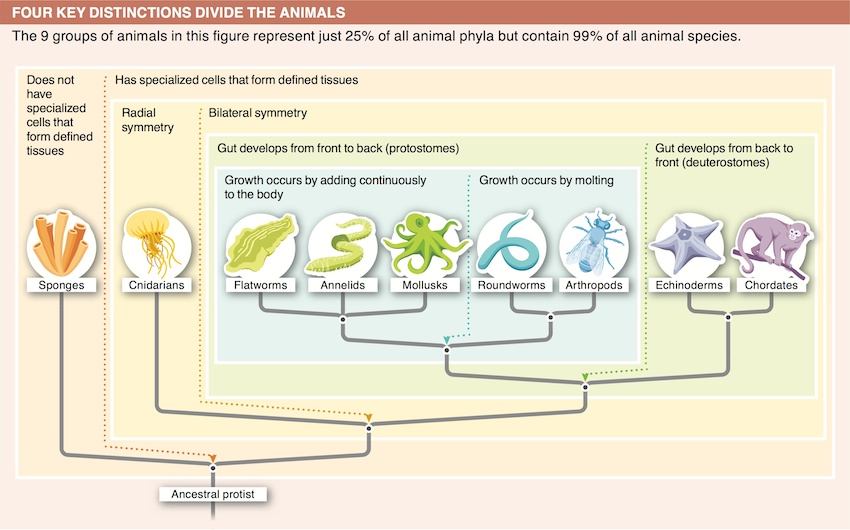
2. Why did Darwin write the note to himself, “Never use the word higher or lower”?
3.
3. All animals share a common ancestor—what is it? How do we know this is true?
4.

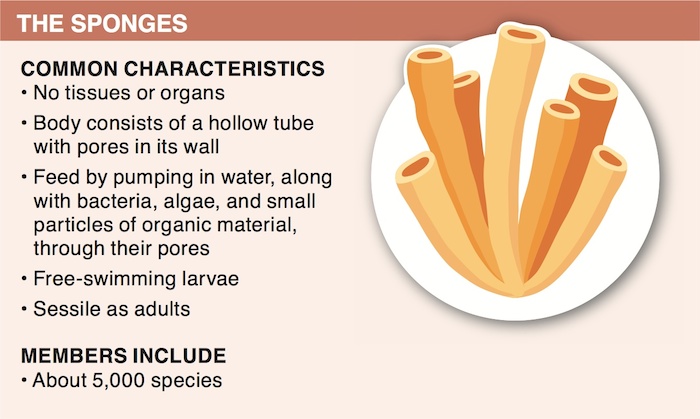
4. Describe the two ways in which sponges can reproduce.
5.
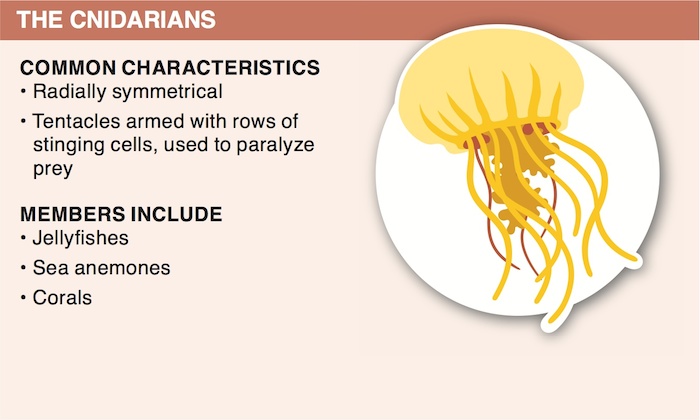
5. Compare and contrast the two types of cnidarian bodies.
6.
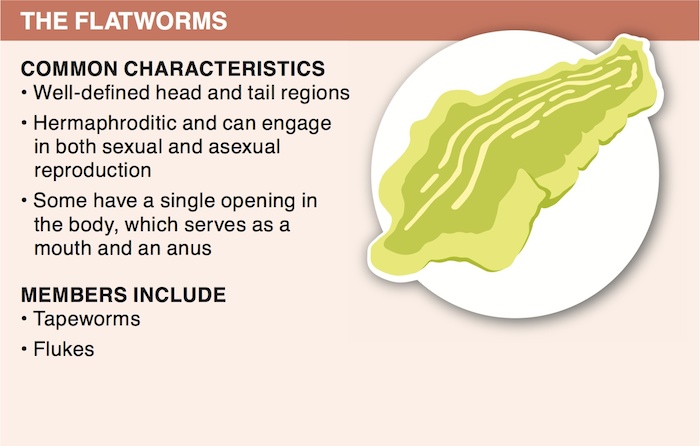
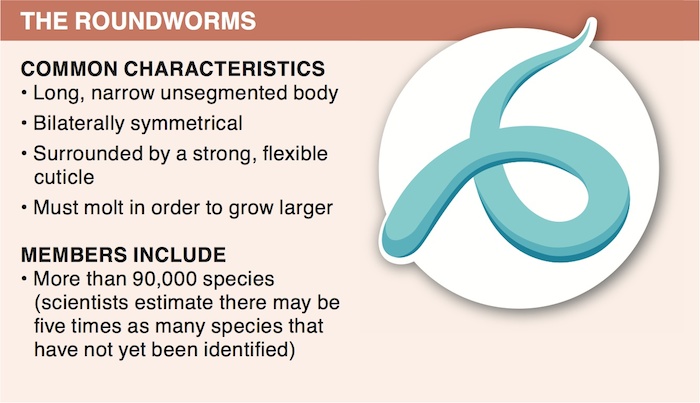
6. What important ecological role do roundworms play?
7.
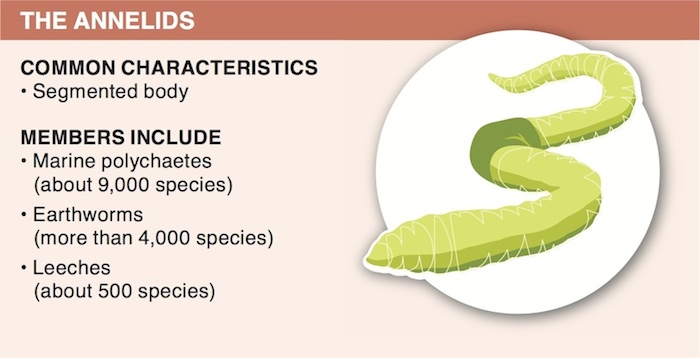
7. You have a friend who confuses a terrestrial slug with a segmented worm (annelid). Describe the characteristics of the slug that you could point out to him that are not found in any annelids.
8.
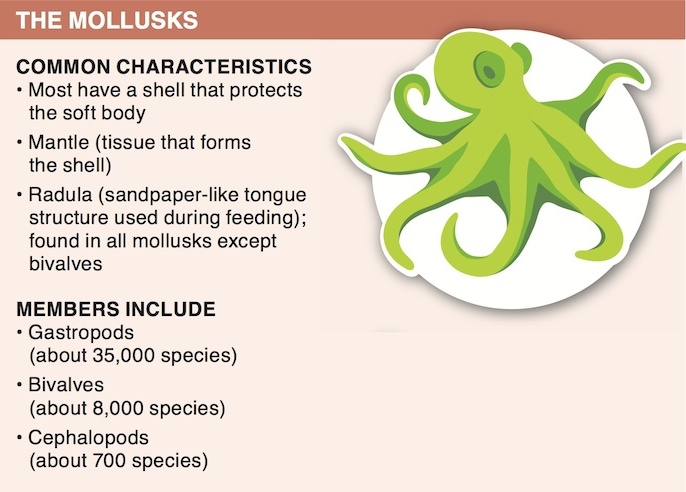
8. What is the specialized tongue found in mollusks called? How does it function?
9.
9. Why are questions of comparative animal intelligence not generally useful?
10.
10. What evidence is typically used to show that octupuses are “smart”?
11.
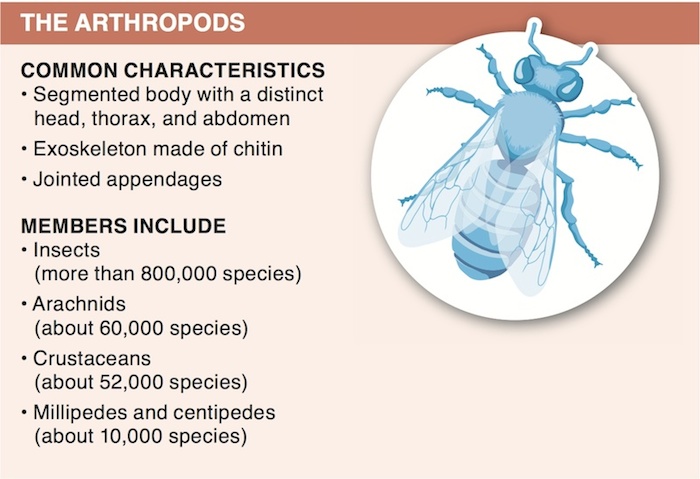
11. What is an exoskeleton?
12.
12. Describe how you could estimate the number of species of beetles in a temperate region.
13.
13. Compare and contrast the benefits and costs of having an exoskeleton.
14.
14. Which two features of insects contributed to their great adaptive radiation?
15.
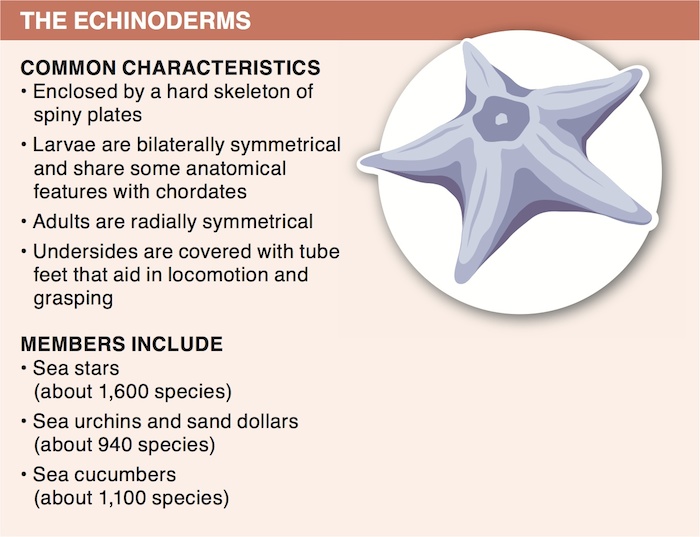
15. Why are echinoderms viewed as an example of how classifying organisms based on evolutionary relatedness can reveal a great deal about the force of natural selection?
16.

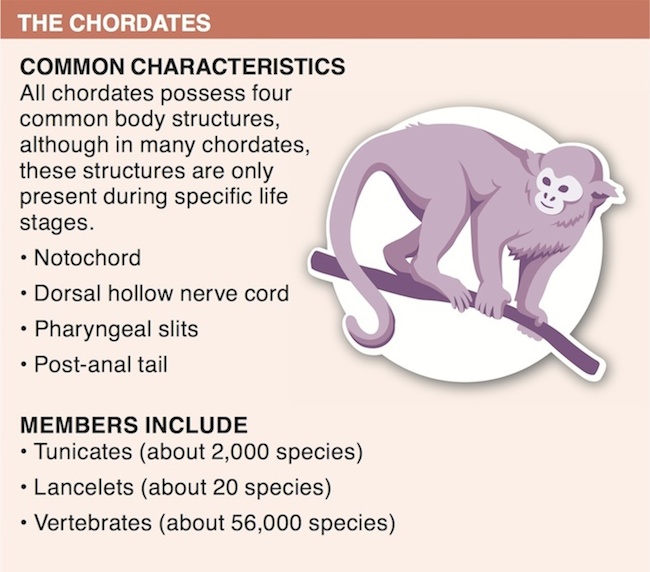
16. Describe the four distinct chordate body structures.
17.
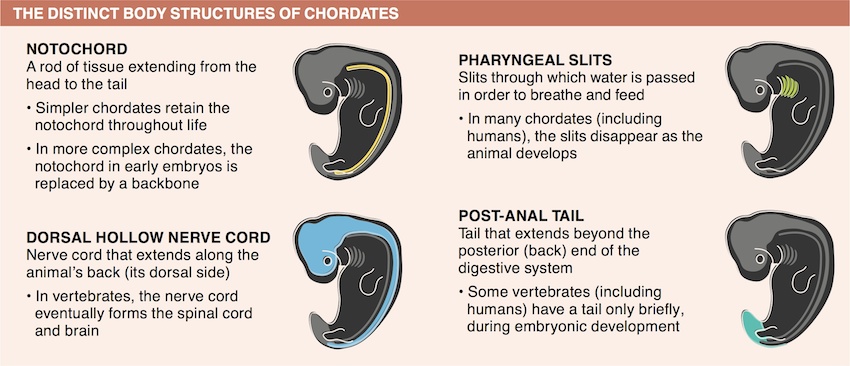
17. Which two evolutionary innovations in vertebrates resulted in their eventual domination among the large animals?
18.

18. What is the most likely evolutionary precursor to the vertebrate lungs?
19.
19. Why is it more important for an amphibian than a reptile to live in close proximity to water?
20.

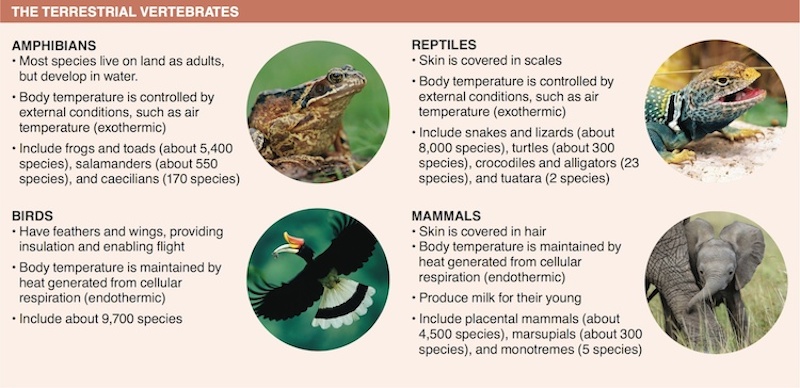
20. Why does an ectotherm, such as a snake, require only an occasional meal to survive, while an endotherm, such as a mouse, requires far more frequent meals?
21.
21. In mammals, what is the main function of the placenta?
22.
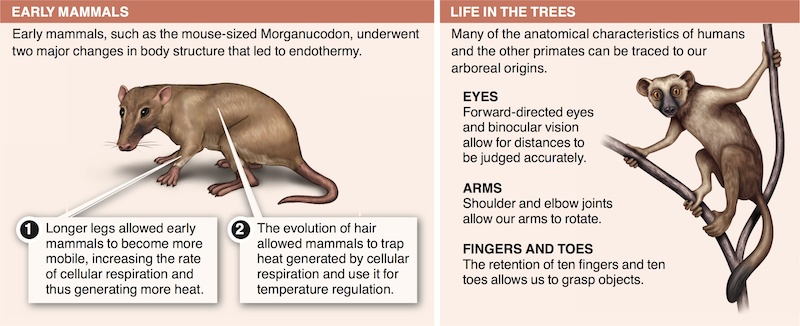
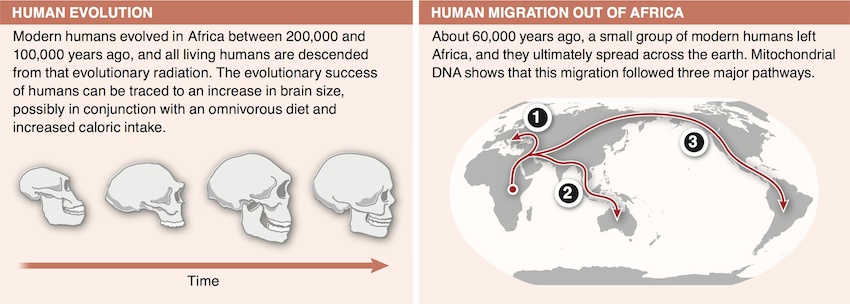
22. The fossil record of early humans reveals that they had much smaller teeth than their ancestors. What does this suggest about their diet? Why?
23.
23. Describe the three major anatomical differences between humans and chimpanzees.
24.
24. The fossil record contains evidence of healed broken bones among the Neandertals. What does this reveal about their social organization and their ways of acquiring food? Why?
Activity results are being submitted...